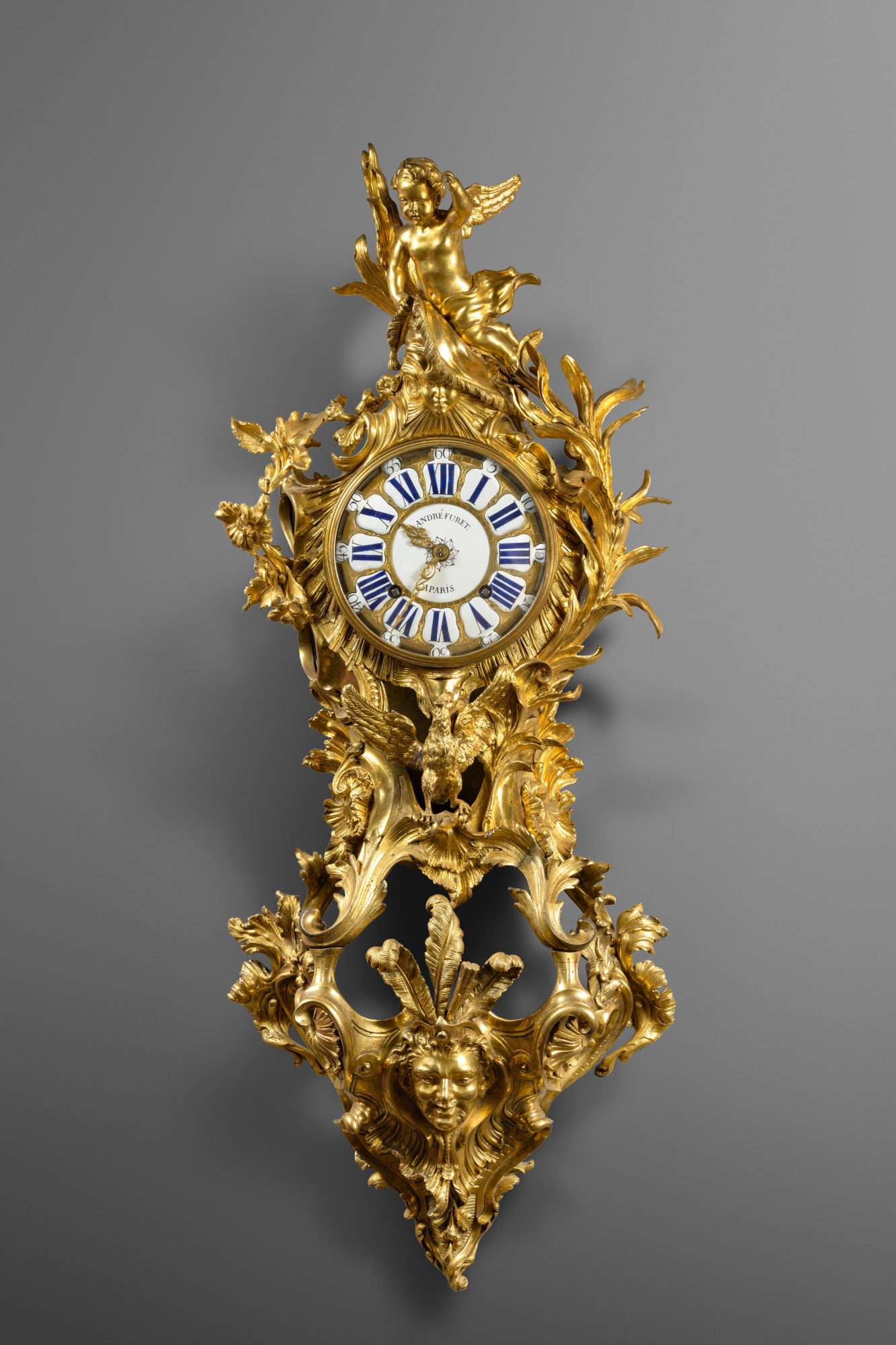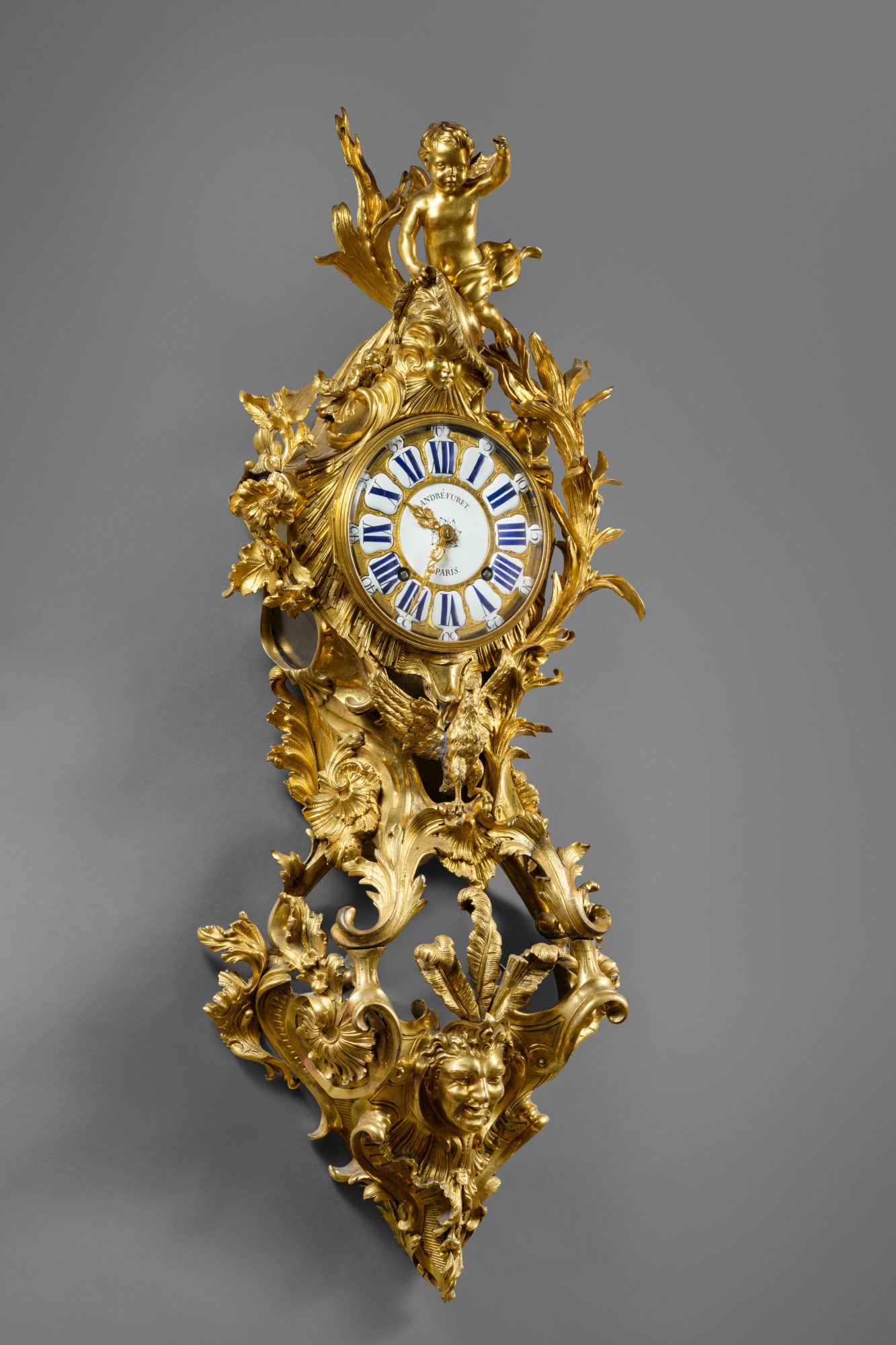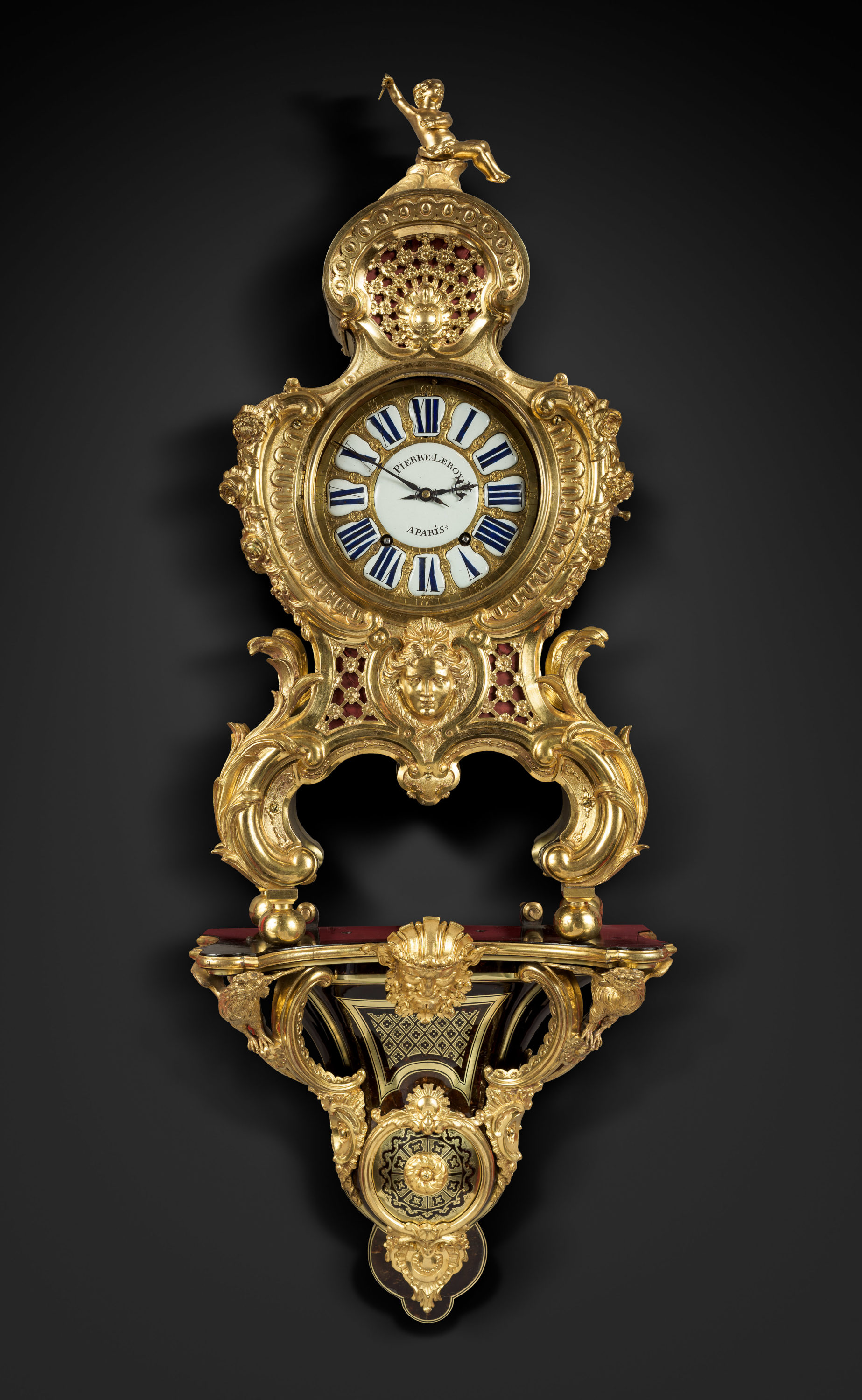Exceptional Gilt Bronze Wall Cartel with Bracket
“Aurora or The Break of Day”

Case attributed to Charles Cressent
Paris, Louis XV period, circa 1740-1745
The round gilt copper dial, signed “André Furet à Paris”, features twelve enamelled cartouches for the Roman hours and the Arabic minutes and a central enamelled plaque; the pierced hands are made of gilt brass. The finely chased and gilt bronze rocaille case with bracket is adorned with scrolling foliage and flowers; the bracket features a Boulle-style satyr’s mask with feathered headdress. The cartel’s upper portion is decorated en suite, with asymmetrical shells, scrolls, branches, and palmettes. Beneath the dial an eagle or phoenix spreads its wings. The clock is surmounted by a lightly draped winged putto who lifts a fringed drapery to reveal a solar mask symbolising Aurora or the Break of Day.
Discover our entire collection of luxury wall clocks for sale online or at the gallery.
This magnificent and elaborate wall cartel may be attributed to Charles Cressent, one of the most important Parisian artisans of the early 18th Century. A bronze caster as well as a furniture maker, he was one of the most influential artistic personalities of the Regency and Louis XV periods. Throughout his career his spectacular and often unique pieces were specially commissioned by contemporary connoisseurs who appreciated his keen aesthetic sense.
To date no other identical cartel has been identified, which suggests that the present piece was very likely created on special order. While its treatment is more strongly influenced by the rocaille style, it is reminiscent of a clock known as the “Mask of Boreas”, made by Cressent circa 1730, which shows Boreas blowing on feathers. One such clock was delivered to the Dauphine’s chambers in Versailles (see A. Pradère, Charles Cressent, sculpteur, ébéniste du Régent, Dijon, 2003, p. 296); another wall cartel by Cressent, surmounted by a similar winged child, is in the Condé Museum in the Château of Chantilly (illustrated in H. Ottomeyer and P. Pröschel, Vergoldete Bronzen, Die Bronzearbeiten des Spätbarock und Klassizismus, Munich, 1986, Band I, p. 78, fig.1.12.5).
André Furet became a master horologist in May 1691.
Charles Cressent (1685 - 1768)
Charles Cressent is one of the most important Parisian cabinetmakers of the 18th century, and probably the most famous furniture maker working in the Regence style, which inspired his furniture and sculpture throughout his career. The son of a sculptor to the king, he studied sculpture in Amiens, where his grandfather resided – his grandfather was himself a sculptor and furniture maker. He initially trained as a sculptor and became a member of the Académie de Saint Luc in 1714, presenting a piece in that category. He then settled in Paris and began to work for several of his colleagues, and married the widow of cabinetmaker Joseph Poitou, formerly the cabinetmaker to Duke Philippe d’Orléans, then the Regent. By dint of this marriage, he became head of the workshop and continued its activities so successfully that he, in turn, became the official supplier to the Regent, and upon the Regent’s death in 1723, his son Louis d’Orléans continued to give commissions, thus insuring Cressent’s continued prosperity during those years. His fame quickly spread beyond the kingdom’s frontiers, as several European princes and kings commissioned pieces from Cressent, among them King John V of Portugal and Elector Charles Albert of Bavaria. In France, he had a private clientele that included members of the aristocracy such as the Duke de Richelieu and important collectors, such as the influential Treasurer General of the Navy Marcellin de Selle. Throughout his career, Cressent created his own bronze mounts that were cast in his workshop, which was against the rules of the bronze casters’ guild, as did André-Charles Boulle. This gave his work a great deal of homogeneity and highlighted his extraordinary talents as a sculptor.









